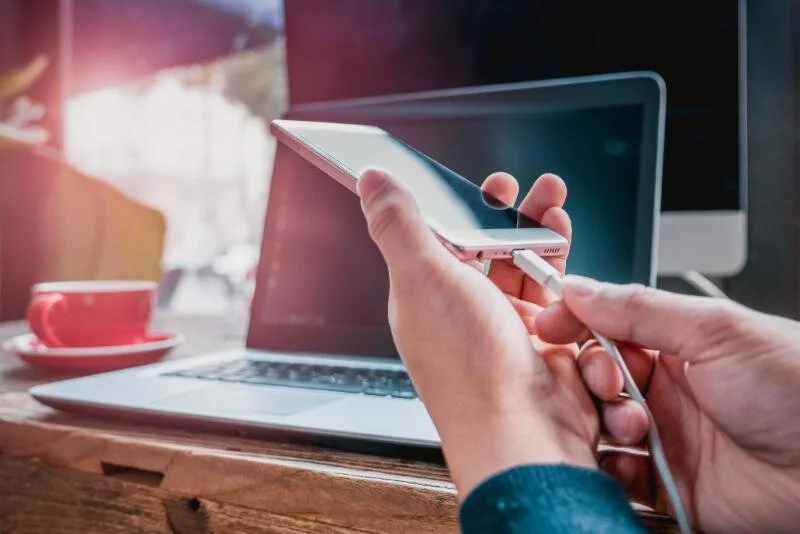Practical Preparedness
Since we now have to be prepared for fires, evacuations, and power outages while also dealing with personal safety in light of covid-19, we want to help you with some guidelines to prepare your tech. This article will help you put a plan in place so you and your technology will be ready when the time comes.
Every step on this list is important. When the power goes out or you have to grab and go, we know we won't have access to our desktop computers, but we will want to use our laptops, and will be depending on our iPhones and iPads for communicating. With this in mind our concerns are:
Charging Our Devices
Accessing Phone Services
Accessing the Internet
Protecting Our Electronics Once the Power Returns
Charging your iPhone, iPad, and/or Laptop Computer
The rule of thumb is to keep your devices fully charged most of the time. I will typically allow my device to run very low on battery once every few weeks during the day. Then, once I am home, I will immediately plug them in to recharge. Of course, during a power outage or evacuation, you cannot just plug in a device, and short of having a generator running, you will need to rely on one or more portable batteries to recharge your devices. There are literally hundreds of portable batteries to choose from, covering different power levels, devices, and overall capabilities.
First, you must make a list of which portable devices will need charging: iPhone, iPad, laptop, etc...
Second, decide on a budget for your portable batteries (figure a minimum of $25). The more devices you need to charge, and the longer you need to keep them charged, the more money you will need to spend.
Third, remember if you are only dealing with a power outage, that your car will charge your iPad or iPhone with the right adaptor. So if you expect to leave the area (even if just for a day trip!) you can plug into your car. You can also charge your devices using the accessory feature, but remember that if you do plan to use your car to charge a device, your car should be outside (not in a garage), even if you are just using the accessory feature. The longer you use the accessory feature, the more likely it is you will need to have your car running to avoid draining the battery. This capability will vary from car to car, so it's best to check your owner's manual to see if you need special adaptors or basic cables.
Fourth: If you have to evacuate, you will want to have portable batteries, power cables, etc... packed and ready to go. This task can be daunting, but we can help. With hundreds of options for portable charging, here are some reviews to help you decide. I use and love the products from Anker, and they have an Amazon Store.
Phone Services
Cell towers and cell phone services may or may not be working. This is out of your control, but you can enable Wi-Fi calling so that if you get to an area not affected by the outage, you can make calls with your iPhone. This article tells you how to enable Wi-Fi calling.
Accessing the Internet
If cellular service is still working, your iPhone will be able to access the internet using cellular data. During the Tubbs Fire, this is what most of us used to keep in contact with others. If you have installed apps for things like banking, health care providers, etc... You will still be able to handle everyday needs. Also, you can use your iPhone to share an internet connection as a Wi-Fi hot spot for other devices.
Protecting Our Electronics Once the Power Returns
Be sure to power down and unplug all of your electronics while the power is out! Once your electronics are powered off, this can be as simple as unplugging your surge protectors so that nothing is damaged when the power comes back on.
Homeland Security has a great list that covers all that can happen. This is a good resource for the bigger picture.
If you need help with any of this, call us at 707-573-9649 and schedule a phone consult with our tech, John, to help you formulate an emergency preparedness plan for your tech!



